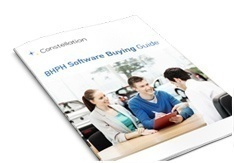An article I wrote that appears in the November issue of Auto Dealer Monthly
2012 has been a pretty good year for BHPH dealers. Sales have been up for many dealers. Delinquencies have been below last year’s levels for most dealers. There are more sources of capital available almost every day and the future looks bright.
Let’s take a look at 5 areas that give us a pretty good picture of the state of our industry.
1. The Buy Here – Pay Here business continues to strengthen.
Studies completed by Experian and others continue to show the BHPH market expanding. In the Experian study, the percentage of used car finance deals handled by BHPH dealers almost doubled from 2010 to 2011. Based upon the slow economic recovery and lingering high unemployment, the number of people ineligible for conventional financing continues to grow. There is and always will be a certain percentage of the car market that depends on BHPH.
2. Finding inventory continues to be a challenge.
Wholesale prices have steadily increased from a low in 2008 to a peak in May of this year. Prices have moderated somewhat over the last few months but remain almost 20% higher than they were in 2009. These higher prices have forced many BHPH dealers to change their business models to account for this higher cost of inventory.
And finding this inventory has become more difficult. Dealership inventory is a trickle down process. BHPH inventory typically comes from trade-ins on late model used vehicles which, in turn, come from trade-ins on new vehicles. New car sales dropped under an annualized rate of 10 million units in September of 2009. That led to significantly fewer late model trade-ins and then fewer older trade-ins. Although the new car market has rebounded over the past 18 months, BHPH dealers will face continued difficulty finding good BHPH units at reasonable prices until the higher new vehicle sales trickles down through the trade cycles to older vehicles.
3. Underwriting is more important than ever.
The higher rates and length of unemployment among traditional BHPH customer and the higher cost and, therefore, selling prices of BHPH vehicles, combine to make underwriting even more critical in BHPH dealerships. The typical BHPH dealer can no longer afford to take some of the risks he was willing to take just a few years ago.
Underwriting has become a vital factor in one other way. The recession and slow recovery have created BHPH customers out of people who traditionally were able to finance their vehicle purchases through conventional lenders. They are used to monthly payments, the ability to pay late and being able to pay without coming to the dealership. Your underwriting process must now also include educating these customers on how buying at a BHPH dealership works. Failure to do so will have an adverse effect on your collections and delinquency.
4. New collections tools continue to grow in usage.
Most BHPH dealers have already made the decision whether to use payment protection devices or GPS locators and you’ve probably heard all the arguments pro and con.
Scoring systems seem to fit the same mold. Those who believe in them claim they can improve underwriting and reduce delinquency and charge-offs. Those that don’t say the system’s results have no correlation with how an account actually performs and that carefully underwriting by the dealership management staff can outperform any system.
The decision on whether to use the various options for collecting payments from a dealership’s customers can be a difficult decision. One of the most basic philosophies from the very beginning of BHPH was that you, the dealer, wanted to see your customer at the dealership every time he got paid to make his payment. As alternative payment methods such as paying by credit or debit card over the phone or even online became available, many dealers chose not to implement these methods so they could maintain contact with their customers in the same ways they always had.
Many of the new customers entering BHPH, however, are used to being able to call in payments or make payments online. They resist the BHPH model of having to appear at the dealership to pay. Dealers who have adopted these newer payment technologies have discovered that making it easier and more convenient for their customers to pay has actually improved their collections and reduced their collection costs. They have learned that they can still stay connected with their customers in other ways while making it easy for them to pay.
5. BHPH dealers need to pay more attention to regulatory compliance.
Compliance with federal and state laws has been any area of concern for car dealers since 9/11. The burden compliance with the various laws, rules and regulations can create for dealers can overwhelm smaller dealers. In the past, too many dealers have ignored compliance in a hope that it would just go away.
That approach, while never a good one, can now lead to serious problems. The Consumer Financial Protection Bureau is beginning to flex its muscles and a revitalized Federal Trade Commission is right behind. In addition, state attorneys general have now been empowered to enforce many FTC regulations. If you have ignored compliance to this point or not made it a top priority, you must address it now.
It is a great time to be a Buy Here – Pay Here dealer. The business can provide a steady income regardless of the economic situation. Reassess your business and look for ways to improve regularly and you can thrive.



